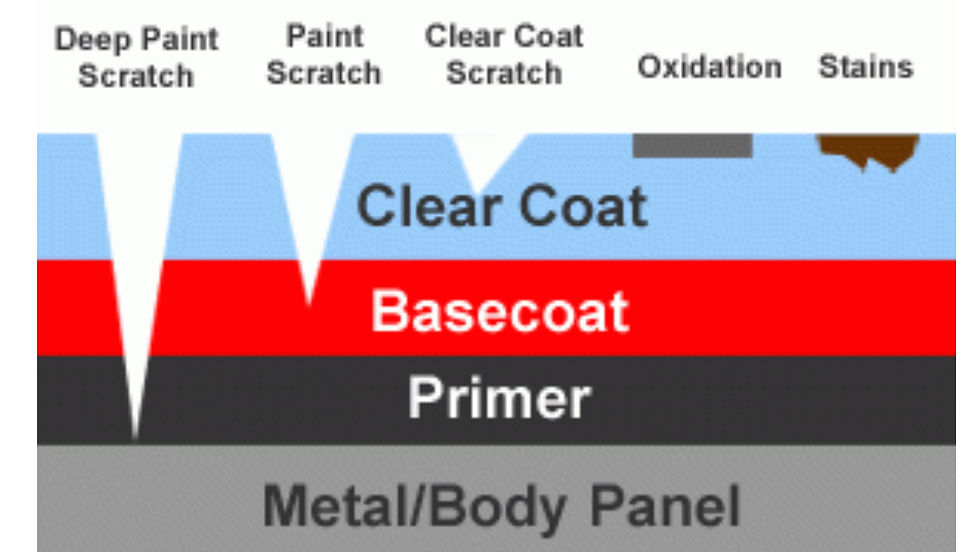
Ceramics and waxes? Why do we need them & what can they do for you?
- awoljonesy1985
- Mar 3, 2021
- 2 min read
Updated: Mar 5, 2021
Ceramics; what’s the big deal? Why all the fuss and what’s the difference between all the protective offerings that seem to be flooding the market?
First let’s talk about modern pain. Compared to single stage (which is what older cars used to have) modern paint is pretty tricky stuff.
Modern paint is formed from multiple layers making up a very hard but quite delicate network of protection over the top of your substrate (body work). The main advances are in what used to be called lacquer, now known as Clear coat. Clear coat is the protective layer that sits on the colour base, which In turn sits on the primer, see the image below.

So as you can see when we talk about defects such as scratches and scrapes were actually describing removal of clear coat. These defects cause trenches and troughs within this layer, which in turn allow light to refract into your eye, making the defects visible. (how we remove them is a different blog and how that leads to reducing this visual effect)
Back to clear-coat, we need to protect it! We do that using waxes and Ceramics.
In basic terms waxes are made of various levels of carnauba which is a soft substance which works by providing a sacrificial layer to protect the clear coat against physical contact, chemicals and environmental substances which may start to degrade the sensitive clear-coat which is the only thing that protects your paint and panel from rusting.
One thing to mention is the differences in clearcoats hardness when it comes to manufactures. A general rule is:
Asia: Soft (Kia/Mazda)
GM & Europe : Medium (Ford/vauxhall/VW)
Prestige: Hard (BMW/Merc/Audi)
When we talk about 'hardness' we’re talking about how easy it is to chip the clear coat and also for a detailer how hard it is to remove those defects.
When we’re talking about wax it’s a layer, when we’re talking about liquid ceramics we’re describing a very hard substance, a chemical compound formed from tiny beads, these allow the ceramic to fit into the cracks and crevices providing a self levelling effect. It therefore bonds with your clear coat instead of just laying on it. This allows for a much higher durability and a smooth and shiny/wet appearance which rivals any wax..
Ceramics also come with what we call a lay angle, which microscopically is the angle at which contaminates have to get to before they roll off the paint work. In essence shit don’t stick to ceramic! Highly Hydrophobic.

Visually Wax is very warm and soft so it’s good for short term such as shows. Ceramics are great for long term and heavy usage. They are available to use on glass, alloys and trim. The duration ranges from 3-9 years with manufacturing warrantyies .

So in summary:
Waxes: Soft, lower duration, cheaper, warm glow, better for unique colours.
Ceramics: Hard, high duration, expensive, high shine, very reflective finish.
It comes down to your budget and your requirements.
As always Dagger is always available to answer questions or to give advice.
Phill Jones
DaggerDetailing







Comments